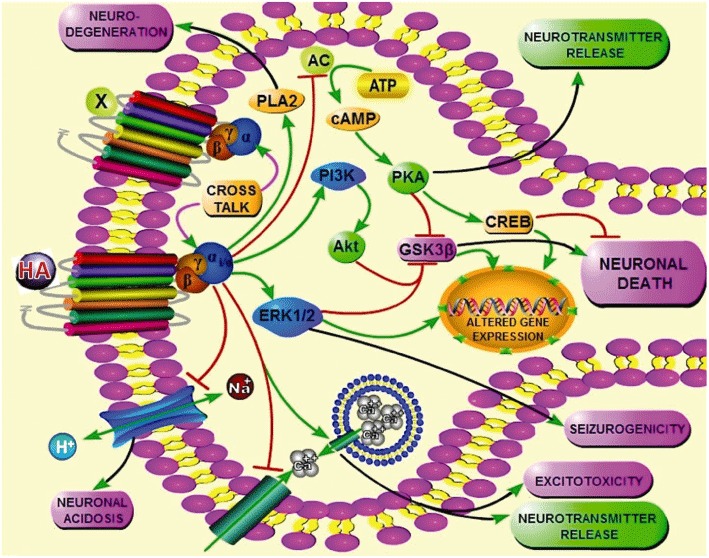Figure 1.

The schematic diagram is a hypothetical depiction of the H3 receptor-mediated signalling pathways in the CNS and their probable implications. Activation of H3 receptor, constitutively or in presence of an agonist, leads to the activation of many Gi/o-associated intracellular pathways. Active Gi/o-proteins negatively couple AC, thereby inhibiting the cAMP/PKA cascade and subsequent lowering of cAMP responsive element binding protein (CREB), a pro-survival transcription factor. Reduction in PKA activity may decrease release of neurotransmitters, for example histamine (HA), GABA, etc. Additionally, H3 receptor activation also activates PI3K and MAPK pathways. Activated PI3K then activates Akt, a serine threonine kinase, which phosphorylates and hence inactivates pro-apoptotic GSK-3β. In the MAPK pathway, especially p44 and p42 MAPK (ERK1/2) are coupled to H3 receptors; activated ERK has also been linked to epilepsy. The other three pathways known so far that are modulated upon H3 receptor activation include increased activity of the enzyme PLA2, whose inhibition confers neuroprotection in epileptic models; mobilization of intracellular Ca2+[Ca2+]i; and finally the inhibition of Na+/H+ exchanger (NHE), a protein that buffers intra-neuronal pH and it's defective functioning is also implicated in epilepsy. Also, H3 receptors possibly influence the function of other GPCRs and vice versa (e.g. dopamine D1 receptor) by virtue of cross talk in heteromer containing cells.
